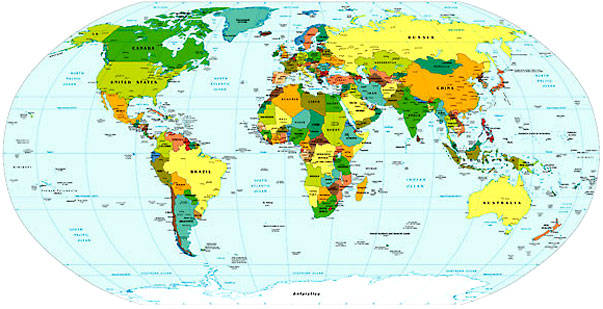 So, the Cook Islands celebrate Constitution Day on 4 August. We do appreciate a constitution, so let’s celebrate the constitution of the Cook Islands. Not one hundred percent familiar with the islands? The Cook Islands is made up of 15 small islands, and they are a self-governing territory in “free association” with New Zealand—this makes them what is known as an Associated State. 4 August is the anniversary of the instigation of self-government—this came about in 1965. Of course New Zealand is still part of the British Commonwealth, and so the official head of state of the Cook Islands is Queen Elizabeth II. “Cook?” Anything to do with a certain Captain? Yep. Though the Spaniard Pedro Fernándo de Quirós visited the islands more than 150 years before Captain Cook, landing on Rakahanga in 1606, Captain Cook’s visit had a greater impact. Of course, prior to all this, Polynesians settled the islands in the 6th century, migrating from Tahiti.
So, the Cook Islands celebrate Constitution Day on 4 August. We do appreciate a constitution, so let’s celebrate the constitution of the Cook Islands. Not one hundred percent familiar with the islands? The Cook Islands is made up of 15 small islands, and they are a self-governing territory in “free association” with New Zealand—this makes them what is known as an Associated State. 4 August is the anniversary of the instigation of self-government—this came about in 1965. Of course New Zealand is still part of the British Commonwealth, and so the official head of state of the Cook Islands is Queen Elizabeth II. “Cook?” Anything to do with a certain Captain? Yep. Though the Spaniard Pedro Fernándo de Quirós visited the islands more than 150 years before Captain Cook, landing on Rakahanga in 1606, Captain Cook’s visit had a greater impact. Of course, prior to all this, Polynesians settled the islands in the 6th century, migrating from Tahiti.Cook arrived and explored the islands in 1773. He actually named them the Hervey Islands (can’t be too self-glorifying if you’re British) and it was actually a Russian that renamed them after cook, 50 years later. From 1821 missionaries began to arrive—from England and from Tahiti. These were the first non-native settlers.
After the settlers began to arrive, in 1858 the Cook Islands were brought together as a state—called the Kingdom of Rarotonga. Thirty years later they were officially made a British protectorate—they requested this status—and they also established a federal parliament. In 1901 they were passed onto New Zealand.
 It hasn’t been all smooth sailing since self-government came about—Albert Henry, the first premier of the islands, was first knighted by Queen Elizabeth in 1974, but when five years later, he was found guilty of election fraud he lost both the premiership and his knighthood. After Tom Davis took over the premiership in 1979, he was knitted in 1981. A few years later, the Cook Islands declared themselves a neutral country—reason? They thought New Zealand wouldn’t really be in a position to defend the islands, and so they decided they would no longer enter a military relationship with any country.
It hasn’t been all smooth sailing since self-government came about—Albert Henry, the first premier of the islands, was first knighted by Queen Elizabeth in 1974, but when five years later, he was found guilty of election fraud he lost both the premiership and his knighthood. After Tom Davis took over the premiership in 1979, he was knitted in 1981. A few years later, the Cook Islands declared themselves a neutral country—reason? They thought New Zealand wouldn’t really be in a position to defend the islands, and so they decided they would no longer enter a military relationship with any country. More recently? Another prime minister ousted from government. In 2002, Terepai Maoate received a vote of no-confidence. Harsh. The new Prime Minister was Robert Woonton. After some reports of voting irregularities in the 2006 elections, Jim Marurai became Prime Minister of the Cook Islands. To all intents and purposes the islands are independence, but New Zealand does actually still have responsibility for overseeing their defence, in spite of the Cook Islands’ neutrality.
It was only in five years ago that Cook Islands Maori, or Māori Kūki 'Āirani – or, for that matter, Rarotongan—became an official language alongside English. This is in spite of the fact that nearly 90 percent of the population are either wholly or partially of Polynesian ethnicity. Way to respect the indigenous population…
And a poem? Today’s poem is “Turtle and Coconut” by Cook Islander poet Kauraka Kauraka. I found it online here. It appears in Fire in the Sea: An Anthology of Poetry and Art, a collection that reflects the Pacific Islands. When I borrowed a copy of the book I found it fascinating.
Turtle and Coconut
One stormy night a pregnant turtle
crawled ashore to lay her eggs
under a coconut tree
As the turtle’s nose
touched the coconut roots
the tree said, “Stop your tickling.
I’m trying to sleep!”
“Forgive me Coconut: can I lay my eggs
among your roots? It’s no longer safe
out in the open sand.”
Coconut knew
some of his roots would be severed
to make a hole for the eggs.
“You can dig your hole Turtle,
but promise me that only I
can eat the egg-shells of your young.
Agreed?”
“Agreed.”
Four thousand eggs were laid between the roots
and the coconut tree cared for them
as if they were his own.
—Kauraka Kauraka (1951-)


No comments:
Post a Comment